Abstract
We have attempted to characterize the 5-hydroxytryptamine (5-HT) receptors mediating bronchoconstriction, vasodilatation, vasodepression and tachycardia in anaesthetized cats following bilateral vagosympathectomy and beta-adrenoceptor blockade with propranolol. 5-HT (1-100 micrograms/kg-1 i.v.) caused dose-related bronchoconstriction and tachycardia but variable and complex effects on diastolic blood pressure and carotid arterial vascular resistance. In contrast, 5-carboxamidotryptamine (5-CT; 0.01-1 micrograms kg-1 i.v.) caused consistent, dose-related decreases in diastolic blood pressure and carotid arterial vascular resistance and increases in heart rate. 5-CT did not cause bronchoconstriction. The 5-HT-induced bronchoconstriction was dose-dependently antagonized by methiothepin, methysergide and ketanserin (10-100 micrograms kg-1 i.v.). The highest doses used of these antagonists did not antagonize bronchoconstriction induced by prostaglandin F2 alpha. The high potency of all three antagonists indicate a 5-HT2-receptor mediated effect. The 5-HT- and 5-CT-induced tachycardia as well as the 5-CT-induced vasodepressor and carotid arterial vasodilator responses were dose-dependently antagonized by low doses of methiothepin (10-100 micrograms kg-1 i.v.) and by high doses of methysergide (100-1000 micrograms kg-1 i.v.) but were little affected by ketanserin in doses up to 1000 micrograms kg-1 i.v. These selective effects of 5-CT appear to be mediated by '5-HT1-like' receptors.
Full text
PDF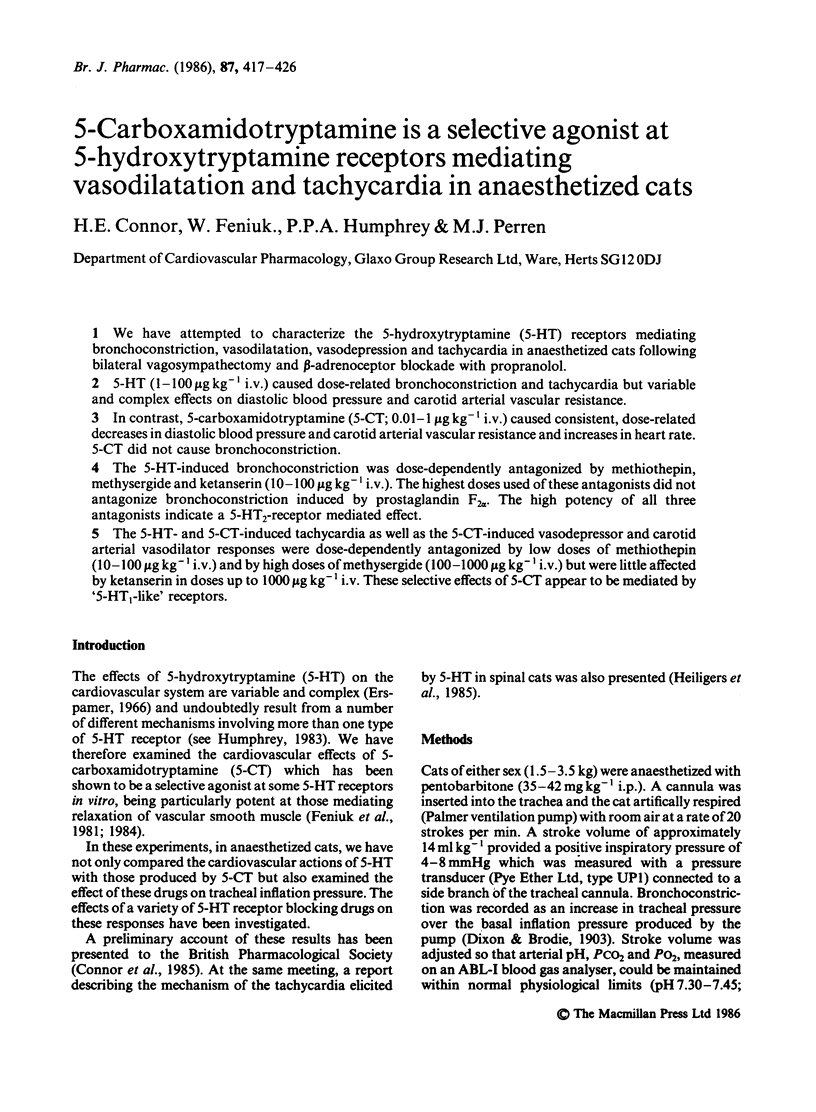
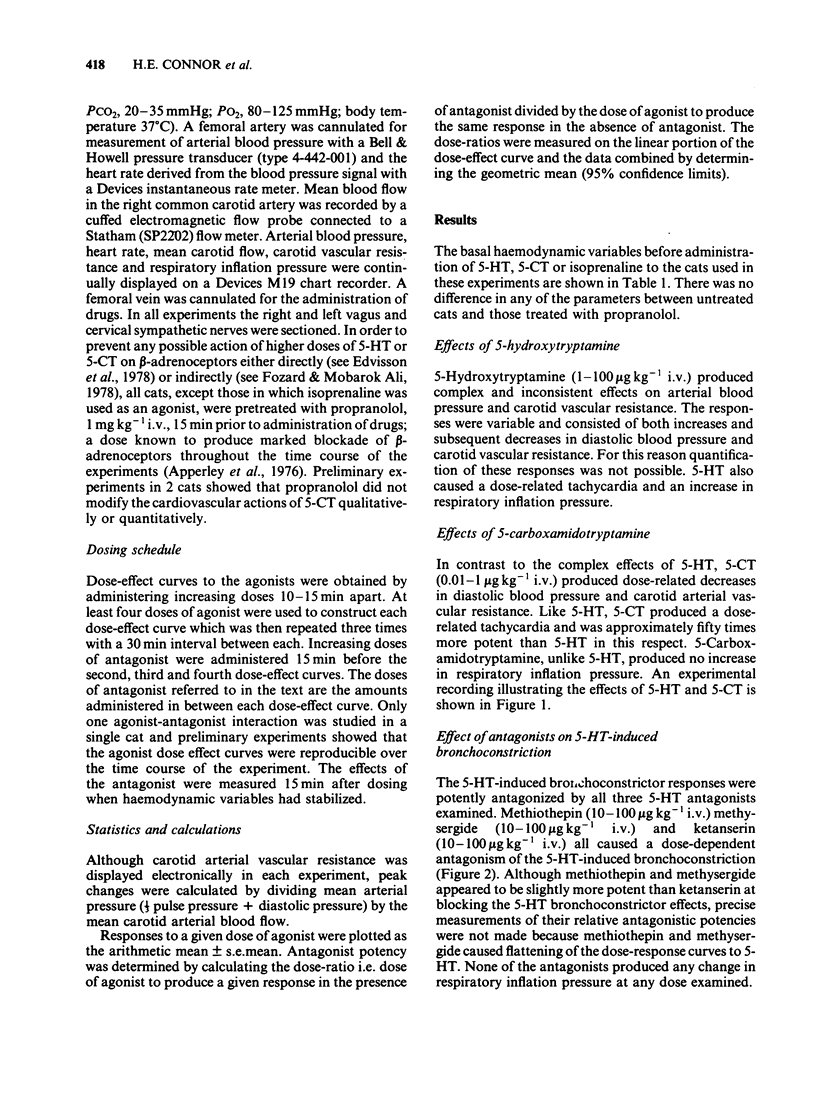
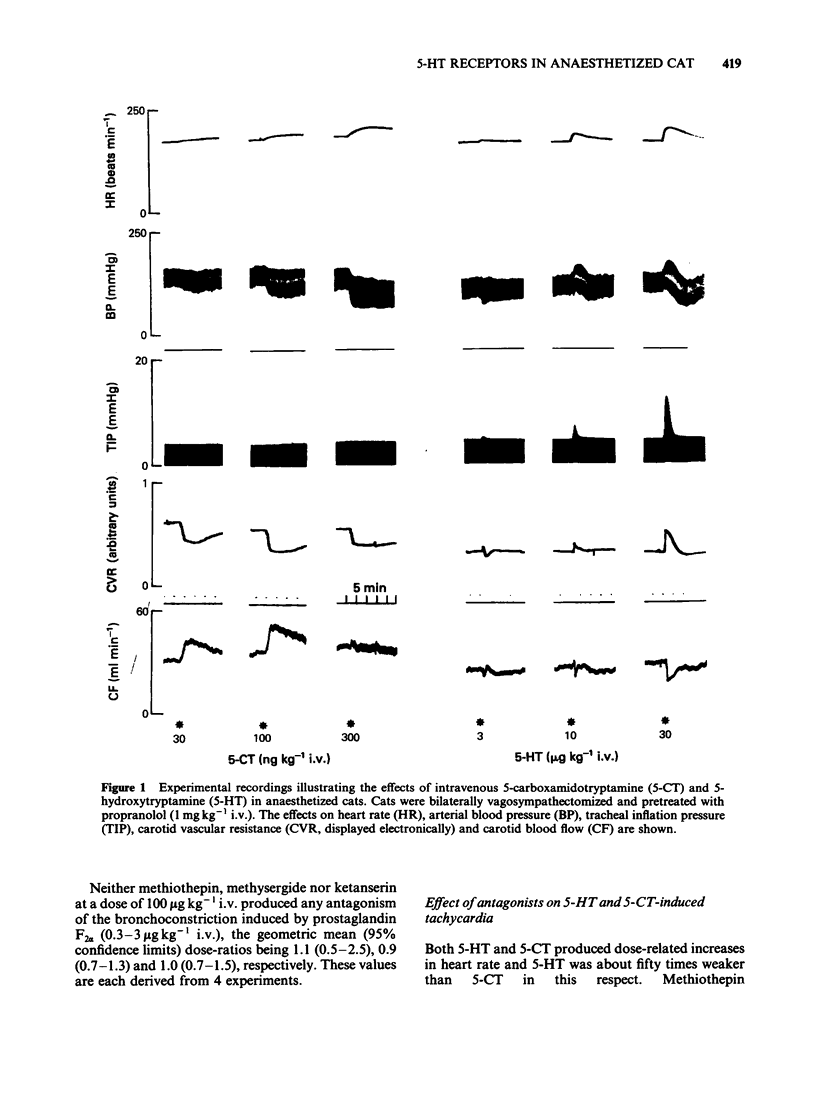
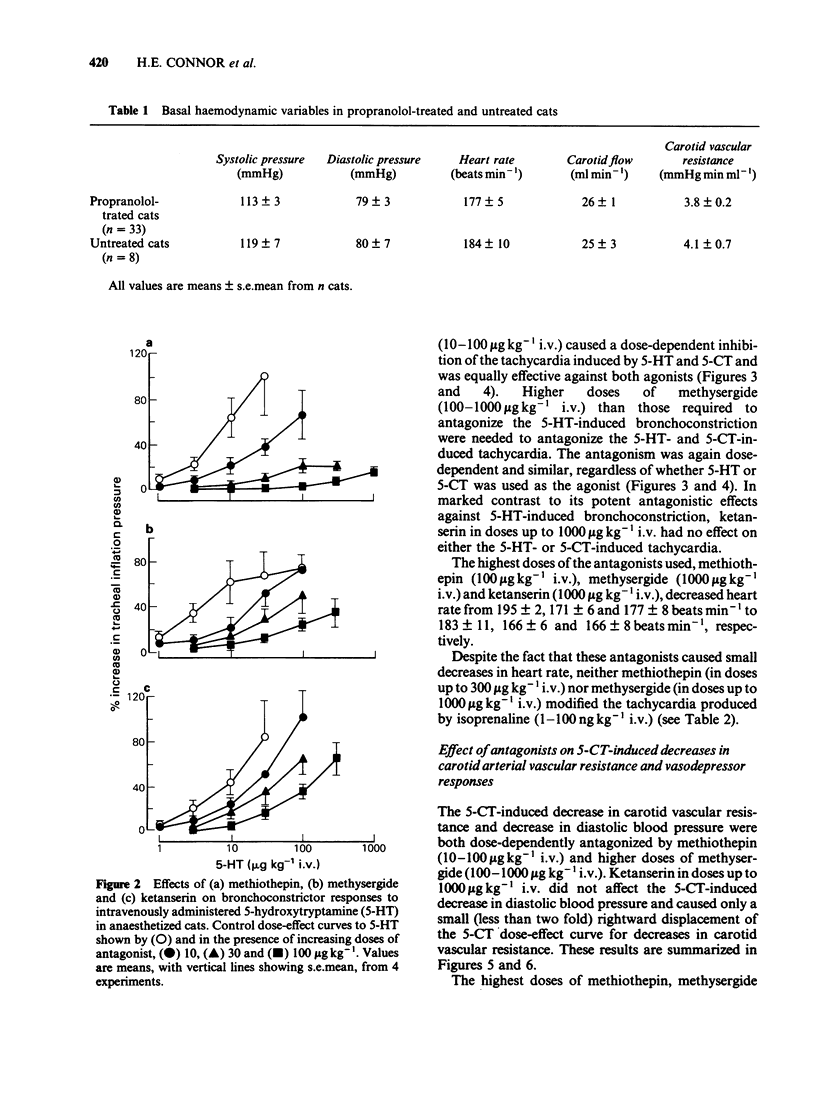
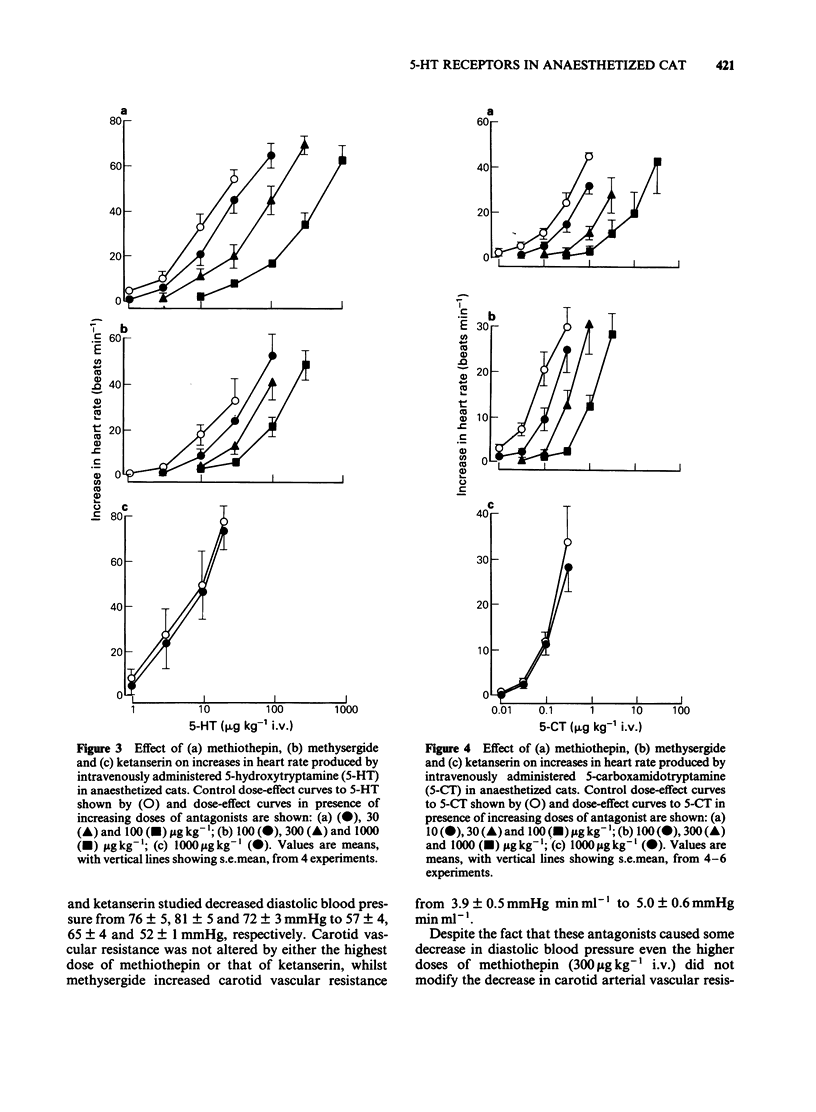
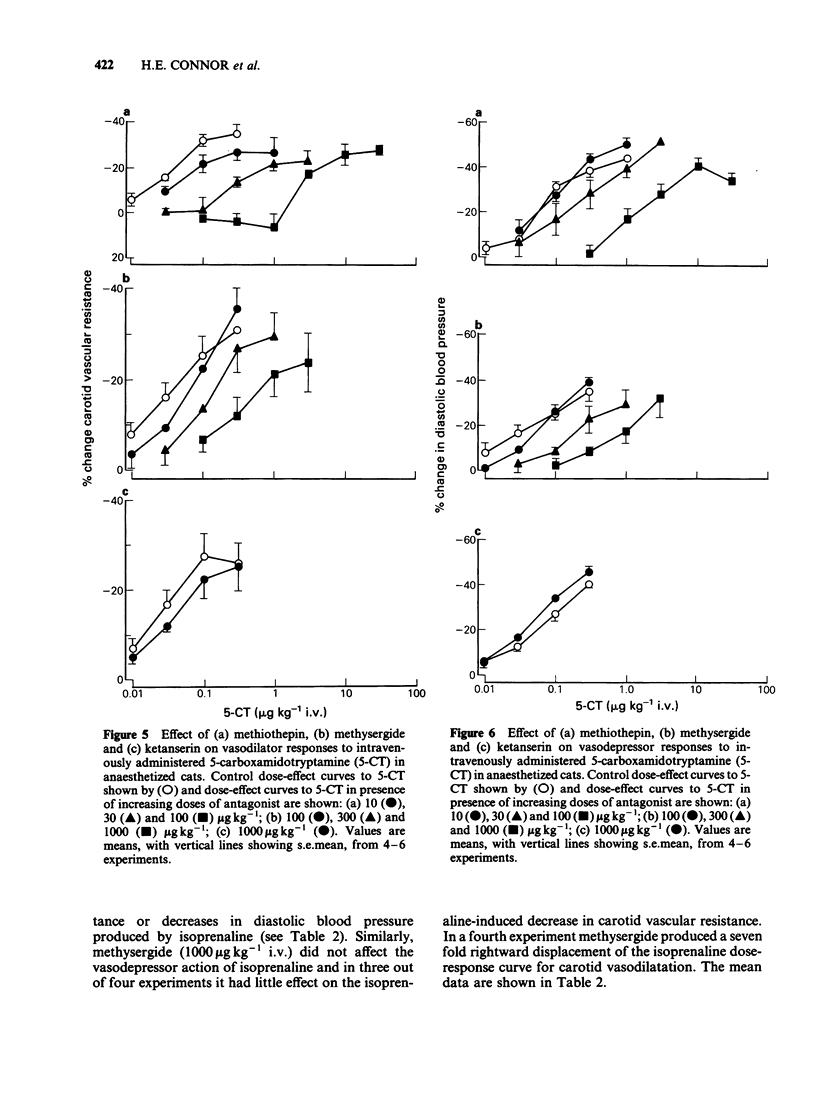
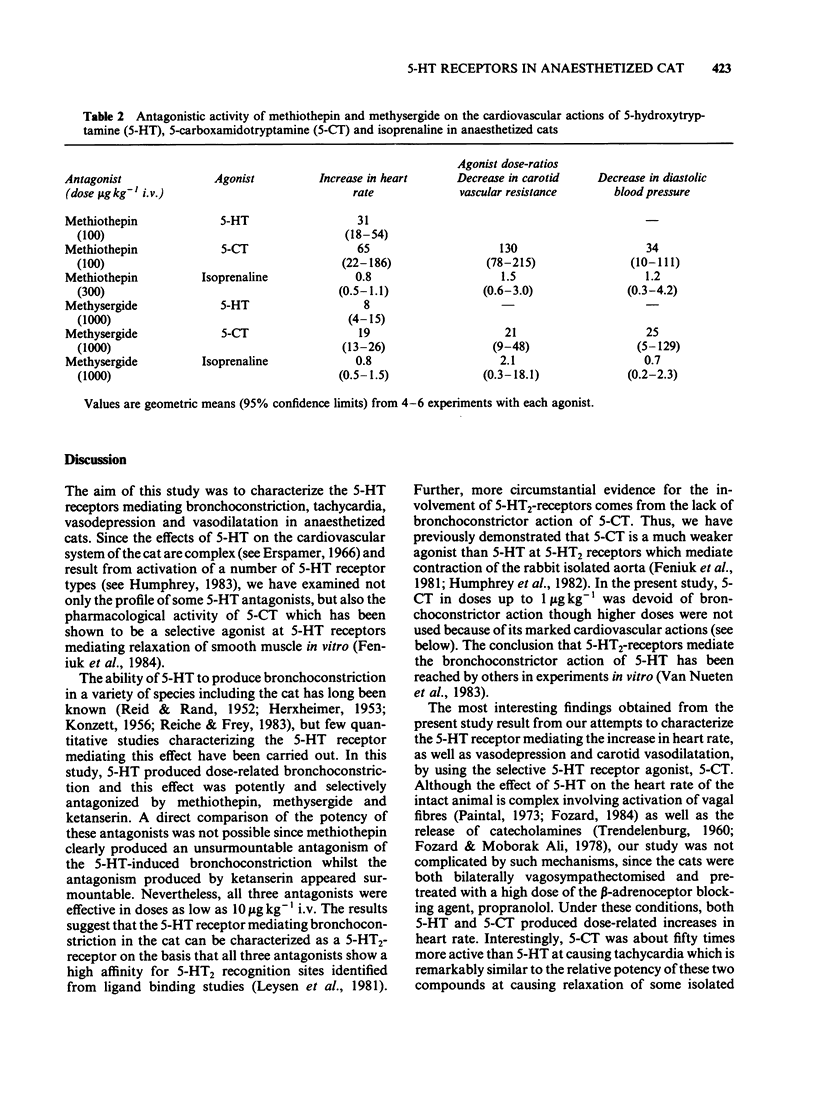
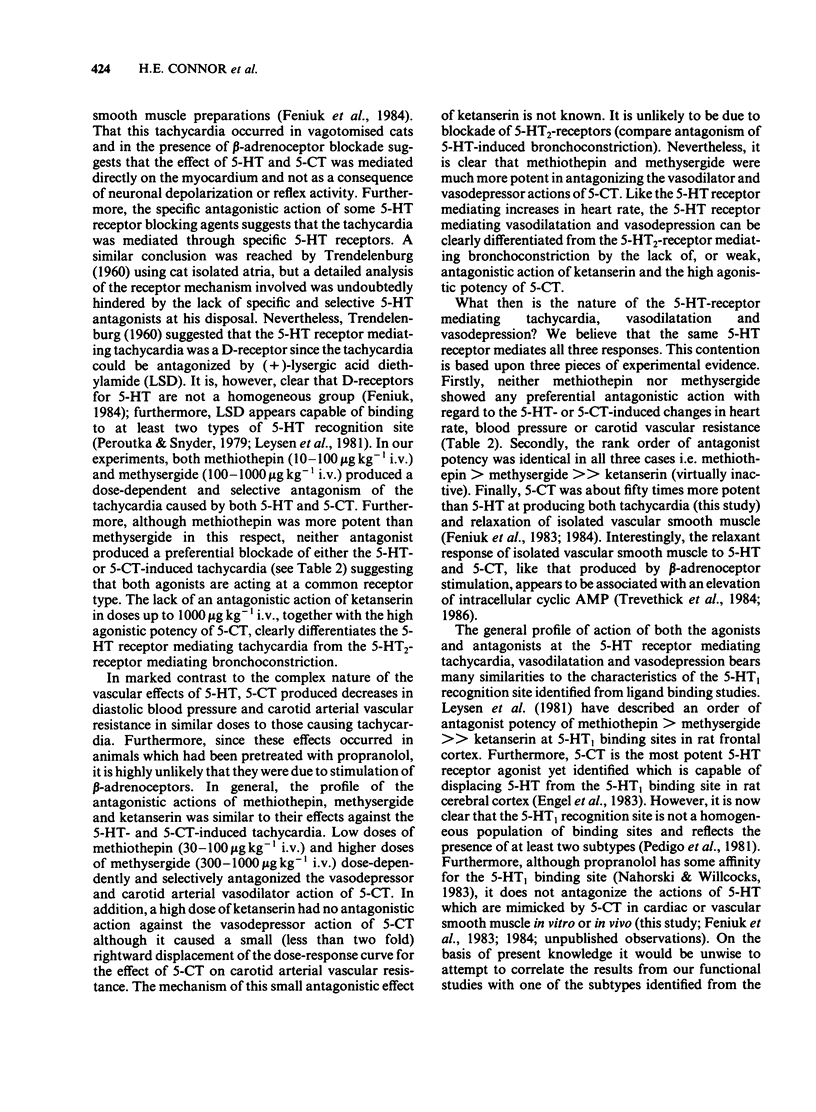
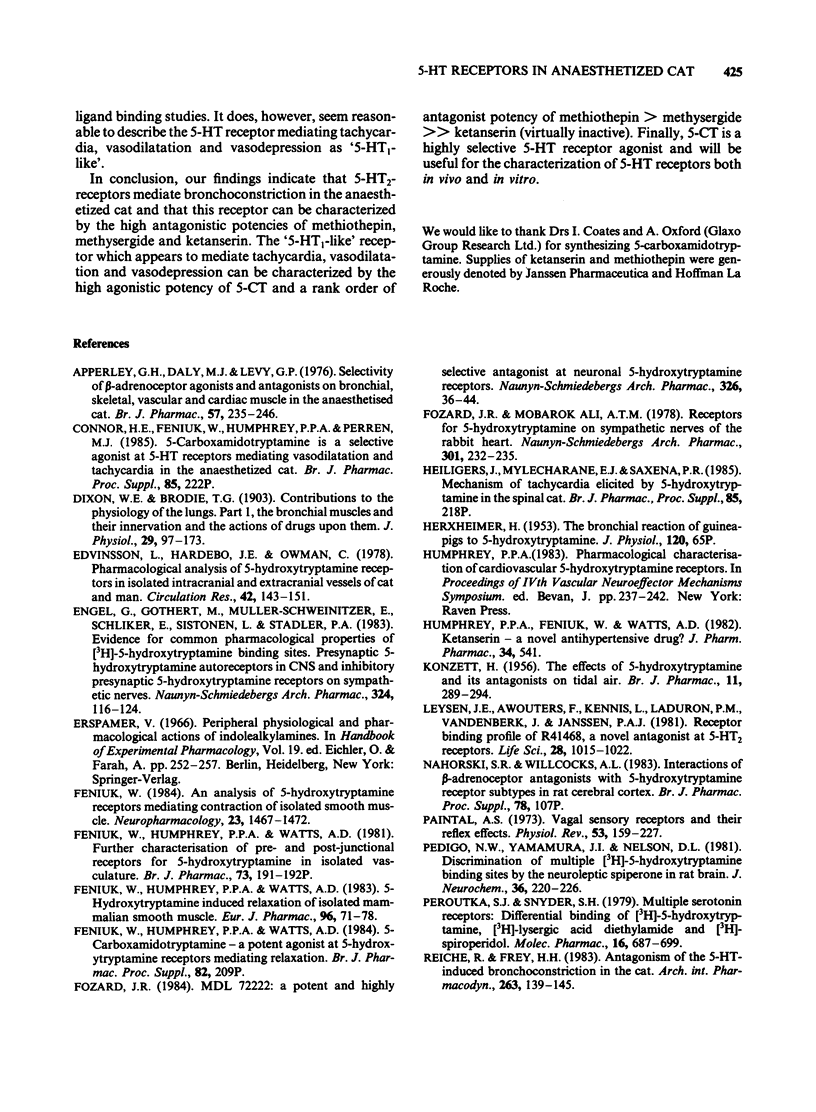
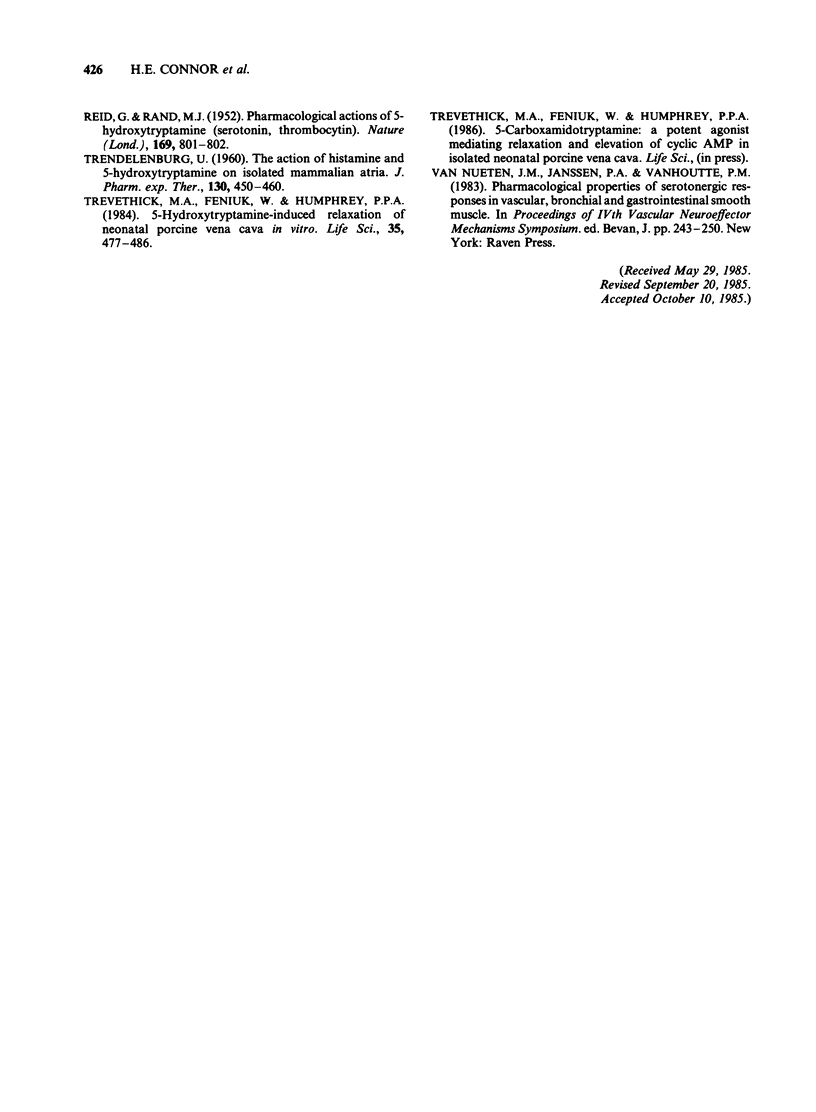
Selected References
These references are in PubMed. This may not be the complete list of references from this article.
- Apperley G. H., Daly M. J., Levy G. P. Selectivity of beta-adrenoceptor agonists and antagonists on bronchial, skeletal, vascular and cardiac muscle in the anaesthetized cat. Br J Pharmacol. 1976 Jun;57(2):235–246. doi: 10.1111/j.1476-5381.1976.tb07473.x. [DOI] [PMC free article] [PubMed] [Google Scholar]
- Dixon W. E. Contributions to the physiology of the lungs: Part I. The bronchial muscles, their innervation, and the action of drugs upon them. J Physiol. 1903 Mar 16;29(2):97–173. doi: 10.1113/jphysiol.1903.sp000947. [DOI] [PMC free article] [PubMed] [Google Scholar]
- Edvinsson L., Hardebo J. E., Owman C. Pharmacological analysis of 5-hydroxytryptamine receptors in isolated intracranial and extracranial vessels of cat and man. Circ Res. 1978 Jan;42(1):143–151. doi: 10.1161/01.res.42.1.143. [DOI] [PubMed] [Google Scholar]
- Engel G., Göthert M., Müller-Schweinitzer E., Schlicker E., Sistonen L., Stadler P. A. Evidence for common pharmacological properties of [3H]5-hydroxytryptamine binding sites, presynaptic 5-hydroxytryptamine autoreceptors in CNS and inhibitory presynaptic 5-hydroxytryptamine receptors on sympathetic nerves. Naunyn Schmiedebergs Arch Pharmacol. 1983 Sep;324(2):116–124. doi: 10.1007/BF00497016. [DOI] [PubMed] [Google Scholar]
- Feniuk W. An analysis of 5-hydroxytryptamine receptors mediating contraction of isolated smooth muscle. Neuropharmacology. 1984 Dec;23(12B):1467–1472. doi: 10.1016/0028-3908(84)90090-x. [DOI] [PubMed] [Google Scholar]
- Feniuk W., Humphrey P. P., Watts A. D. 5-Hydroxytryptamine-induced relaxation of isolated mammalian smooth muscle. Eur J Pharmacol. 1983 Dec 9;96(1-2):71–78. doi: 10.1016/0014-2999(83)90530-7. [DOI] [PubMed] [Google Scholar]
- Fozard J. R., Ali A. T. Receptors for 5-hydroxytryptamine on the sympathetic nerves of the rabbit heart. Naunyn Schmiedebergs Arch Pharmacol. 1978 Jan-Feb;301(3):223–235. doi: 10.1007/BF00507041. [DOI] [PubMed] [Google Scholar]
- Fozard J. R. MDL 72222: a potent and highly selective antagonist at neuronal 5-hydroxytryptamine receptors. Naunyn Schmiedebergs Arch Pharmacol. 1984 May;326(1):36–44. doi: 10.1007/BF00518776. [DOI] [PubMed] [Google Scholar]
- HERXHEIMER H. The bronchial reaction of guinea-pigs to 5-hydroxytryptamine (serotonin). J Physiol. 1953 Jun 29;120(4):65P–66P. [PubMed] [Google Scholar]
- Humphrey P. P., Feniuk W., Watts A. D. Ketanserin--a novel antihypertensive drug? J Pharm Pharmacol. 1982 Aug;34(8):541–541. doi: 10.1111/j.2042-7158.1982.tb04788.x. [DOI] [PubMed] [Google Scholar]
- Leysen J. E., Awouters F., Kennis L., Laduron P. M., Vandenberk J., Janssen P. A. Receptor binding profile of R 41 468, a novel antagonist at 5-HT2 receptors. Life Sci. 1981 Mar 2;28(9):1015–1022. doi: 10.1016/0024-3205(81)90747-5. [DOI] [PubMed] [Google Scholar]
- Paintal A. S. Vagal sensory receptors and their reflex effects. Physiol Rev. 1973 Jan;53(1):159–227. doi: 10.1152/physrev.1973.53.1.159. [DOI] [PubMed] [Google Scholar]
- Pedigo N. W., Yamamura H. I., Nelson D. L. Discrimination of multiple [3H]5-hydroxytryptamine binding sites by the neuroleptic spiperone in rat brain. J Neurochem. 1981 Jan;36(1):220–226. doi: 10.1111/j.1471-4159.1981.tb02397.x. [DOI] [PubMed] [Google Scholar]
- Peroutka S. J., Snyder S. H. Multiple serotonin receptors: differential binding of [3H]5-hydroxytryptamine, [3H]lysergic acid diethylamide and [3H]spiroperidol. Mol Pharmacol. 1979 Nov;16(3):687–699. [PubMed] [Google Scholar]
- REID G., RAND M. Pharmacological actions of synthetic 5-hydroxytryptamine (serotonin, thrombocytin). Nature. 1952 May 10;169(4306):801–802. doi: 10.1038/169801a0. [DOI] [PubMed] [Google Scholar]
- Reiche R., Frey H. H. Antagonism of the 5-HT-induced bronchoconstriction in the cat. Arch Int Pharmacodyn Ther. 1983 May;263(1):139–145. [PubMed] [Google Scholar]
- TRENDELENBURG U. The action of histamine and 5-hydroxytryptamine on isolated mammalian atria. J Pharmacol Exp Ther. 1960 Dec;130:450–460. [PubMed] [Google Scholar]
- Trevethick M. A., Feniuk W., Humphrey P. P. 5-hydroxytryptamine-induced relaxation of neonatal porcine vena cava in vitro. Life Sci. 1984 Jul 30;35(5):477–486. doi: 10.1016/0024-3205(84)90240-6. [DOI] [PubMed] [Google Scholar]


